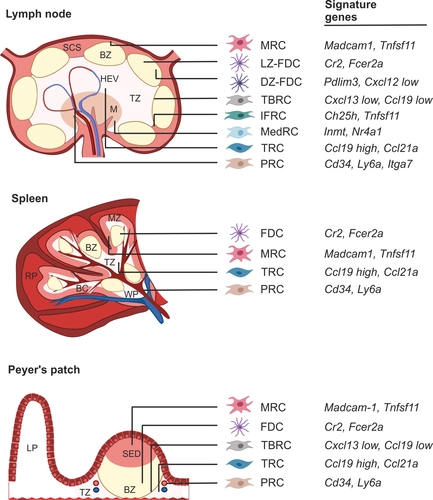Differentiation and activation of fibroblastic reticular cells

Secondary lymphoid organs (SLO) are underpinned by fibroblastic reticular cells (FRC) that form dedicated microenvironmental niches to secure induction and regulation of innate and adaptive immunity. Distinct FRC subsets are strategically positioned in SLOs to provide niche factors and govern efficient immune cell interaction. In recent years, the use of specialized mouse models in combination with single-cell transcriptomics has facilitated the elaboration of the molecular FRC landscape at an unprecedented resolution. While single-cell RNA-sequencing has advanced the resolution of FRC subset characterization and function, the high dimensionality of the generated data necessitates careful analysis and validation. Here, we reviewed novel findings from high-resolution transcriptomic analyses that refine our understanding of FRC differentiation and activation processes in the context of infection and inflammation. We further discuss concepts, strategies, and limitations for the analysis of single-cell transcriptome data from FRCs and the wide-ranging implications for our understanding of stromal cell biology.
Publisher URL: https://onlinelibrary.wiley.com/doi/10.1111/imr.12981
Open URL: https://onlinelibrary.wiley.com/doi/pdfdirect/10.1111/imr.12981
DOI: 10.1111/imr.12981
Keeping up-to-date with research can feel impossible, with papers being published faster than you'll ever be able to read them. That's where Researcher comes in: we're simplifying discovery and making important discussions happen. With over 19,000 sources, including peer-reviewed journals, preprints, blogs, universities, podcasts and Live events across 10 research areas, you'll never miss what's important to you. It's like social media, but better. Oh, and we should mention - it's free.
Researcher displays publicly available abstracts and doesn’t host any full article content. If the content is open access, we will direct clicks from the abstracts to the publisher website and display the PDF copy on our platform. Clicks to view the full text will be directed to the publisher website, where only users with subscriptions or access through their institution are able to view the full article.


